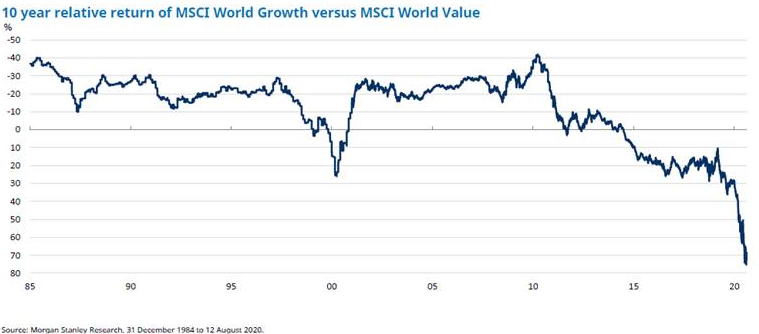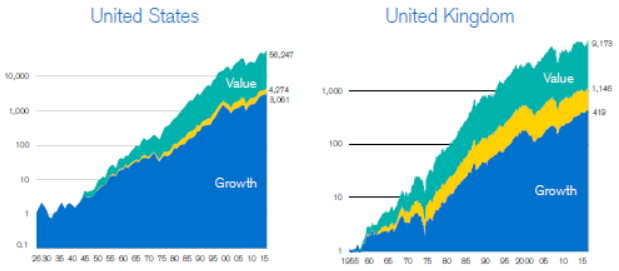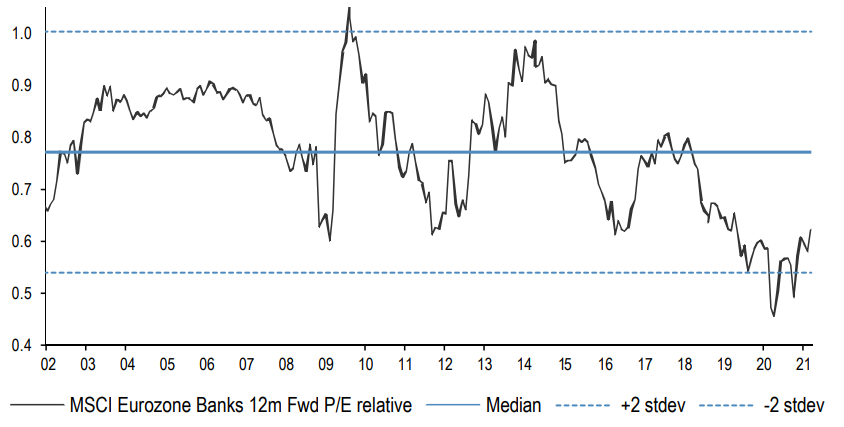Value factor ETFs saw strong inflows last week and have consistently done so since Pfizer published its vaccine results back in November 2020. The question to ask now is: have the new value backers missed the discount window?
According to data from Bloomberg Intelligence, value ETFs saw €4.3bn inflows in the four months to 25 February, a significant swing in sentiment following the €160m outflows seen between July and November 2020.
However, last week a number of value ETFs saw another uptick in positive flows. Highlighting this, the iShares Edge MSCI USA Value Factor UCITS ETF (IUVF) saw $657m inflows while the iShares Edge MSCI World Value Factor UCITS ETF (IWFV) and the iShares Edge MSCI Europe Value Factor UCITS ETF (IEFV) booked $265m and $199m inflows, respectively, in the week to 12 March, according to data from Ultumus.
More broad strategies offering value exposure have also benefited from the factor’s popularity. With the US economy being spurred on by loosening lockdowns and Biden stimulus, investors seeking a value and small-cap tilt piled into the Xtrackers S&P 500 Equal Weight UCITS ETF (XDEW) to the tune of $1.1bn over the two weeks to 12 March.
Equal weight ETF inflows surge as investors bet on cyclical shift
These sizeable flows have seen value-tilted strategies sit among the largest European flows in consecutive weeks. Still confident in the broad rotation from momentum to cyclical equities, investor enthusiasm in this shift was given a boost by the recent tech stock dip.
Now, against a backdrop of reflation, and the prospect of interest rate increase and further bond yield hikes down the line, can investors continue believing in the return to value – or is its moment in the sun already played out?
Does value still have worth?
A lot of what individuals make of the value trade will be based on their existing preconceptions about growth and value equities.
For more than five years – and supported by years of low interest rates – growth has outperformed value to the extent that by the start of 2020, the MSCI World Value index was already underperforming the MSCI World Growth index by around 30%.

According to Peter Sleep, senior portfolio manager at 7IM, this degree of underperformance caused many to question whether the long-term value could preserve its advantage over long duration growth.
Sleep said: “[Value] got so cheap in fact that a lot of people suggested that the academic and historic research was no longer valid.”
However, given the interest rate tailwinds enjoyed by growth since the 2008 Global Financial Crisis (GFC), and the fact this was the most significant growth bull run since the 'dot com bubble', investors would be wise not to prematurely call time of death on value.

Looking more closely at the current context, the investment case for value is even more compelling due to its equity valuations versus growth, but more importantly, versus its own past valuations.
Energy equities, for instance, entered a bear market in 2019 and proceeded to post their worst year-on-year declines in over four decades of data collection, eventually settling with the share prices of companies such as BP and Shell hitting their lowest levels since the turn of the millennia in October 2020.
Even though oil prices are back to normal levels, energy equities themselves still have some way to go, as seen with the MSCI World Energy index currently sitting 31% beneath its five-year high. Further uptick is also likely in oil spot and equity valuations, as the return to ‘normal’ life sees further recovery in sectors such as manufacturing and travel.
How long can energy ETFs keep the lights on?
Financials are in a similar position, with their P/E ratios falling in a fairly consistent direction over the last seven years, and many equity valuations hitting multi-decade lows during 2020. Now, despite many companies posting bullish recoveries in recent months, European banks still have some headroom before reaching their twenty-year p/e ratio median.

“No one can call the very bottom of the value bear market – only after the event. I thought that the bottom might have been March last year, but it just accelerated the fall,” Sleep said.
“Value has further to run. When one looks at value sectors like oils, banks, mining, real estate and airlines and so on they still look very cheap.”
The verdict on value
Looking at metrics such as equity valuations and inflation predictions, value remains a potential exposure for ETF investors looking for a pandemic recovery play.
Crucially, the way value stocks tend to track periods of economic recovery over the course of months if not years means that the shift to value should still have some distance to run.
Amid fewer bankruptcies, released consumer demand and further dividend reinstatements, it will be interesting to see whether this upturn will be start of the next period of value outperformance.







